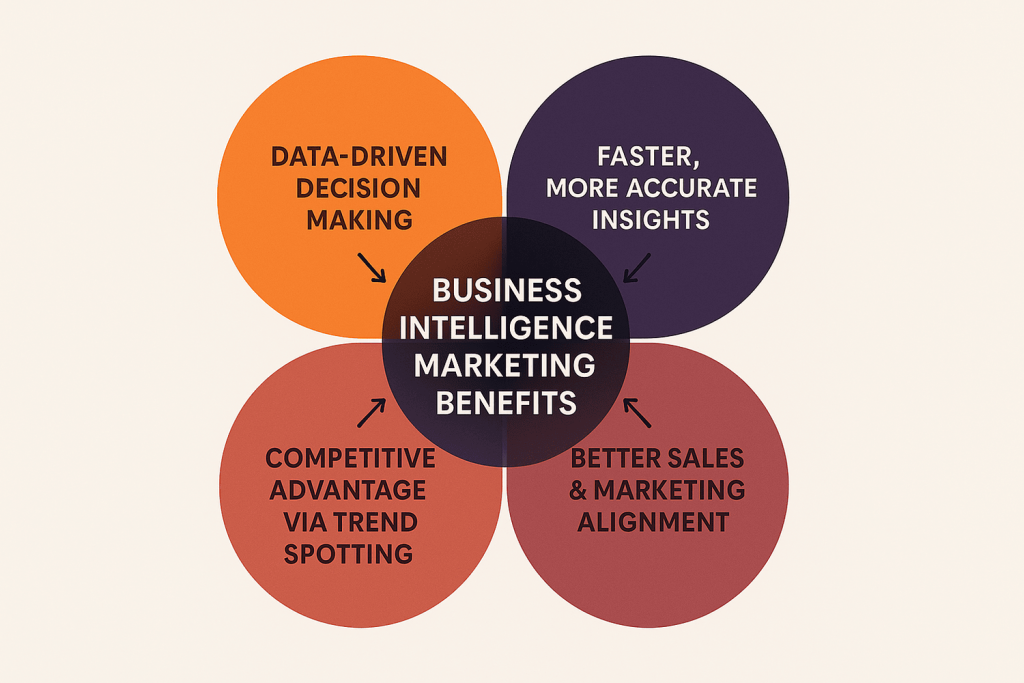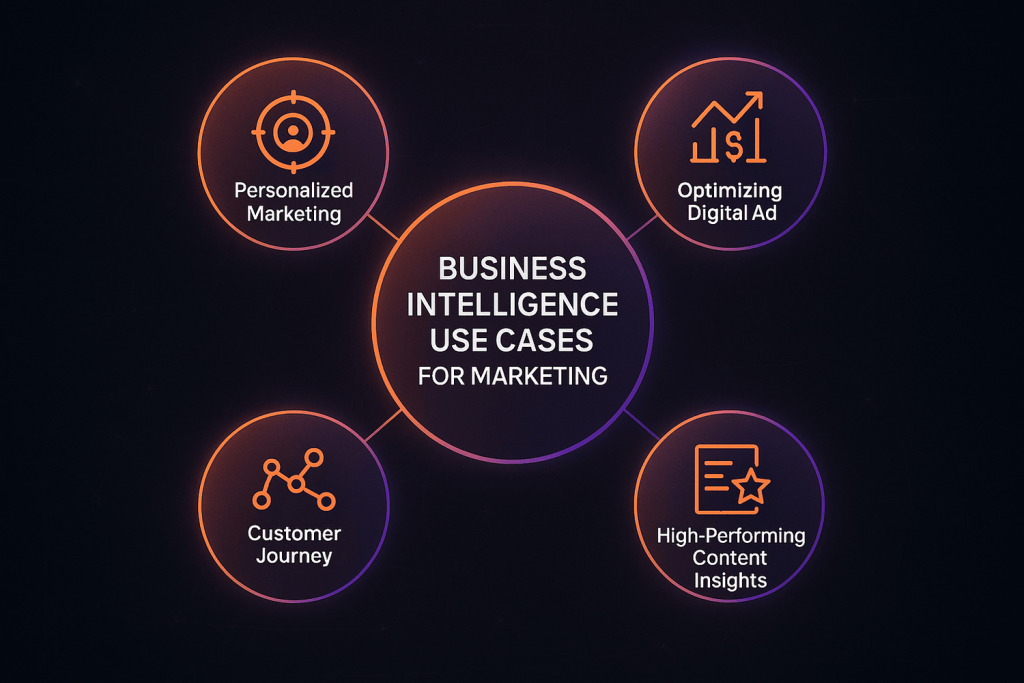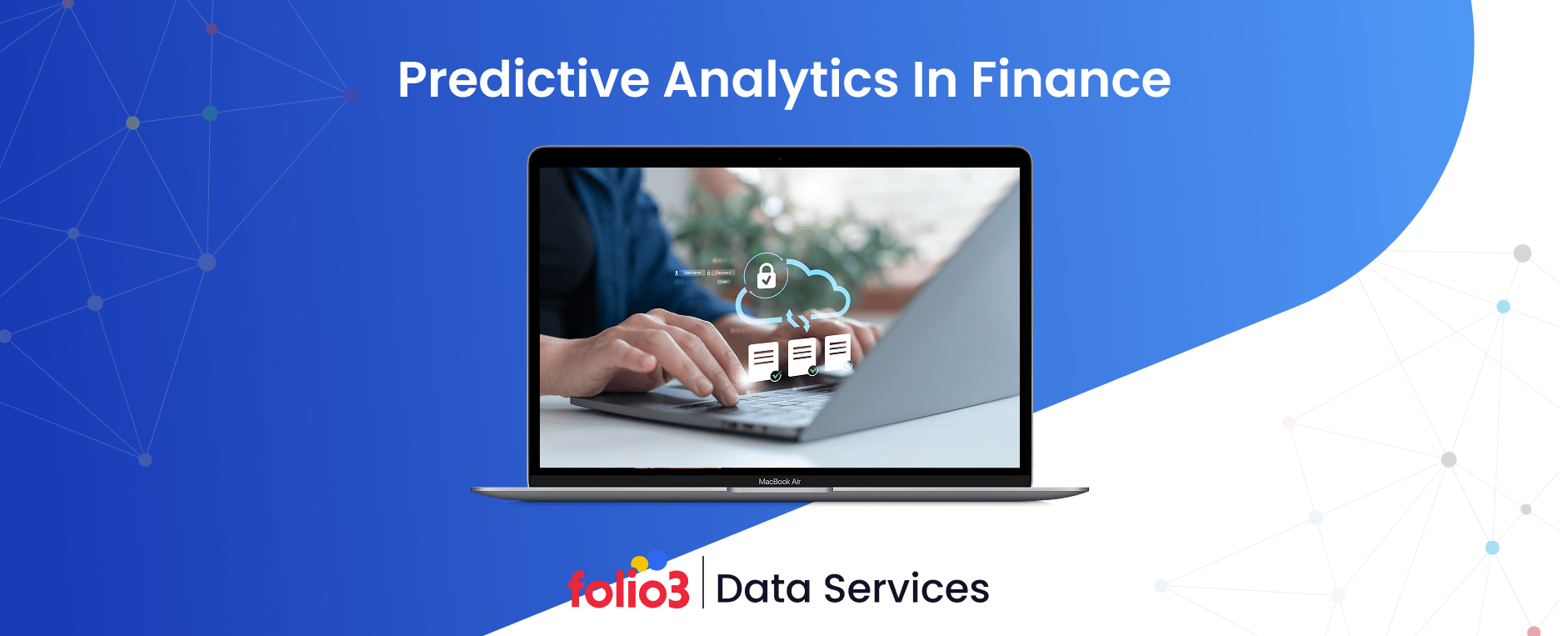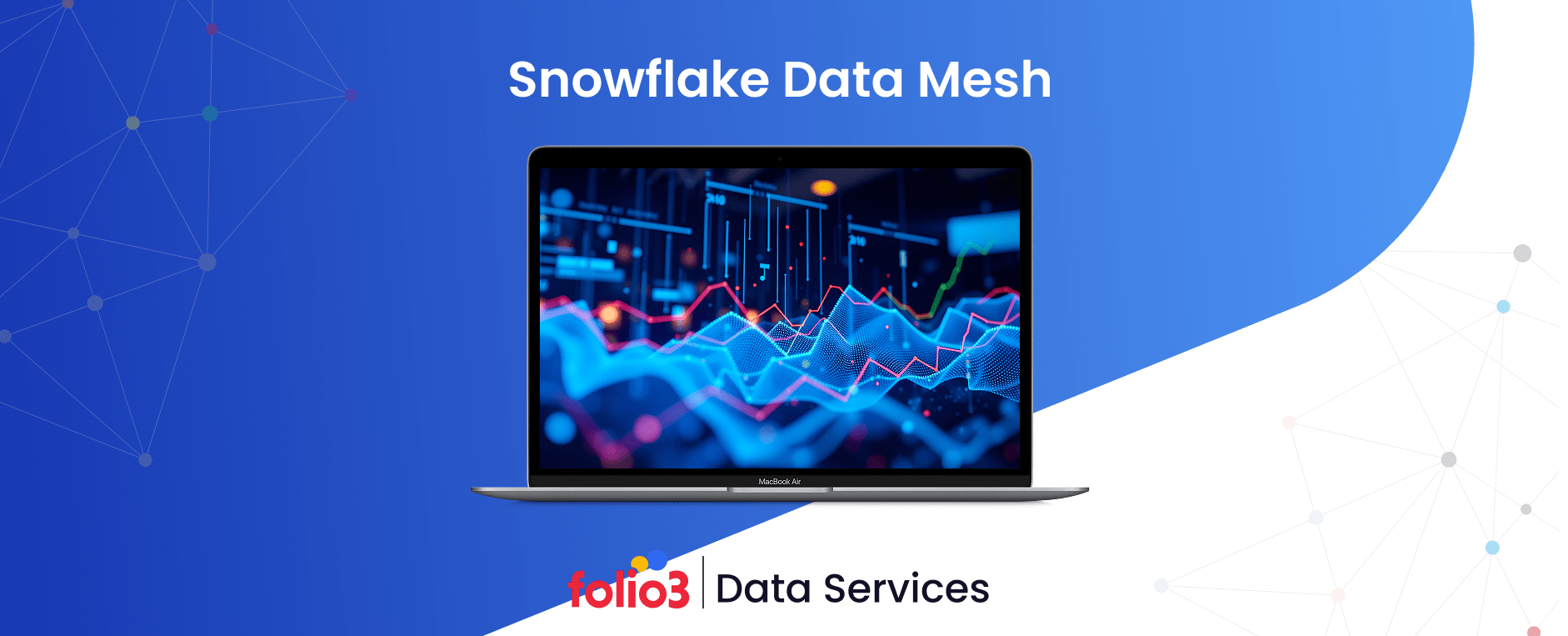With the rise of big data and advanced analytics, how businesses approach marketing has transformed significantly. Organizations now have access to vast amounts of customer information, but using this data effectively requires the right tools and strategies. This is where business intelligence for marketing comes into play.
Business intelligence (BI) allows marketers to analyze customer behaviors, measure campaign performance, and optimize marketing strategies. Unlike traditional marketing approaches that rely heavily on intuition and past experiences, BI enables data-driven decision-making, helping businesses stay competitive.
This article explores what business intelligence is for marketing, its benefits, real-world use cases, and essential tools to help organizations integrate business intelligence for sales and marketing into their workflows.
What is Business Intelligence in Marketing?
Business intelligence for marketing refers to collecting, analyzing, and leveraging data to optimize marketing campaigns and strategies. To provide actionable insights, BI tools aggregate data from multiple sources, including CRM systems, social media analytics, email campaigns, and website traffic.
The primary goal of business intelligence in marketing is to improve customer targeting, enhance engagement, and maximize return on investment (ROI). By integrating BI tools, businesses can track key performance indicators (KPIs), automate reporting, and adjust marketing strategies based on real-time data.
Benefits of Using BI in Marketing
By using business intelligence services in marketing, companies gain a competitive edge by making smarter, faster, and more informed decisions. These benefits translate into higher efficiency, better customer targeting, and increased revenue generation:

1. Data-Driven Decision-Making
Business intelligence for marketing eliminates guesswork by offering precise, data-backed insights. Marketers can analyze customer preferences, behaviors, and purchasing patterns to make informed decisions about campaign strategies, pricing, and product development.
Companies can segment their audience more effectively using a business intelligence marketing strategy, create hyper-personalized campaigns, and optimize budget allocation for maximum impact. Data-driven decision-making leads to better customer engagement, improved ROI, and a more agile marketing approach that adapts to real-time market shifts.
2. Faster and More Accurate Insights
Traditional marketing research methods often take weeks or months to yield actionable insights, leading to missed opportunities. Business intelligence tools provide real-time access to customer and market data, enabling marketers to track campaign performance instantly.
These tools allow businesses to monitor website traffic, social media interactions, and real-time ad performance, making adjusting strategies easier. With business intelligence for sales and marketing, companies can instantly refine messaging, shift budget allocations, and optimize digital marketing efforts, maximizing efficiency and effectiveness.
3. Competitive Advantage Through Trend Spotting
Understanding and acting on market trends before competitors can make a significant difference. Business intelligence tools for marketing analyze vast amounts of industry data, social media activity, and customer sentiment to help businesses identify emerging trends early.
With advanced analytics, marketers can predict consumer behavior shifts, detect growing market demands, and adjust product positioning accordingly. Business intelligence marketing strategy helps organizations stay ahead by proactively shaping campaigns based on real-time market insights rather than reacting to competitors’ moves.
4. Better Alignment Between Sales and Marketing
One of the biggest challenges businesses face is the disconnect between sales and marketing teams. Business intelligence for sales and marketing bridges this gap by giving both departments the same customer insights. Based on sales data, marketers can craft more targeted campaigns, while sales teams can more accurately follow up on high-quality leads.
A unified data-driven approach enhances lead generation, improves nurturing strategies, and boosts conversion rates. Additionally, BI tools equipped with data visualization services enable seamless collaboration, ensuring that both teams work consistently toward shared goals.
Use Cases of BI in Marketing
Let’s explore some real-world use cases to see how BI, supported by advanced data analytics services, transforms marketing strategies in practice.

1. Personalized Marketing and Targeting
BI tools analyze customer demographics, behaviors, and past interactions to create highly personalized marketing campaigns. This enables businesses to segment their audience more effectively and deliver targeted messages, offers, and promotions that resonate with specific customer groups.
By leveraging self-service business intelligence, marketing teams can independently access and analyze data without relying on IT, enabling faster insights and more agile campaign adjustments. Using predictive analytics, companies can anticipate customer needs and tailor their marketing efforts accordingly, improving engagement and conversion rates.
2. Optimizing Digital Advertising Spend
With BI, marketers can track ad performance across multiple platforms, such as Google Ads, Facebook, and LinkedIn, to determine which campaigns generate the best ROI.
Leveraging a robust AI data extraction solution enables companies to automatically collect and process data from multiple advertising channels. By analyzing click-through rates, conversion rates, and cost-per-acquisition metrics more effectively, this approach ensures marketing dollars are spent efficiently, reduces wasted ad spending, and maximizes impact.
3. Identifying High-Performing Content
Content marketing plays a critical role in attracting and engaging customers. BI tools help marketers determine which blog posts, videos, or social media content generate the most engagement, traffic and leads.
By analyzing content performance metrics, businesses can refine their content strategy, focus on topics that resonate with their audience, and create high-quality, impactful content that drives customer actions.
4. Managing and Improving Customer Journeys
Understanding the customer journey is essential for optimizing conversions and enhancing customer satisfaction. BI tools provide comprehensive insights into how customers interact with a brand across different touchpoints, from initial awareness to final purchase.
When organizations align marketing and business intelligence, they gain deeper visibility into customer behaviors, enabling them to identify drop-off points in the sales funnel, personalize interactions, and refine engagement strategies. This approach not only boosts conversions but also strengthens customer retention, lifetime value, and overall brand loyalty.
How Do You Get Started With Bi in Marketing?
By following these steps, businesses can successfully implement business intelligence solutions to enhance marketing performance and drive growth. With the right tools, strategies, and a strong data culture, organizations can unlock the full potential of BI in marketing.
Step 1: Define Goals and Key KPIs
Before implementing BI tools, organizations must establish clear marketing objectives and key performance indicators (KPIs). These may include conversion rates, customer acquisition costs, and engagement metrics.
Setting precise goals ensures that your business intelligence strategy aligns with broader marketing initiatives and delivers measurable outcomes. A well-defined strategy helps prioritize data collection, reporting, and analytics efforts to maximize the impact of BI on overall marketing performance.
Step 2: Choose the Right BI Tools
Selecting the appropriate enterprise business intelligence platform depends on business size, industry, and specific marketing needs. Popular BI platforms include Tableau, Google Data Studio, and Microsoft Power BI. Leveraging comprehensive data analytics services and solutions offered by these platforms empowers marketing teams to perform advanced analytics,
Step 3: Ensure Proper Data Integration and Access
BI tools must integrate seamlessly with existing marketing software, CRM systems, and analytics platforms to view customer data comprehensively. Proper data integration allows marketers to track customer interactions across multiple touchpoints, ensuring a unified and accurate dataset for analysis.
Step 4: Build Dashboards and Set Up Reporting
Dashboards visually represent key marketing metrics, enabling teams to monitor real-time performance at a glance. Setting up automated reports ensures marketers access up-to-date insights without manual data compilation. Customizable dashboards allow businesses to track campaign effectiveness, customer behavior, and sales trends in a user-friendly format.
Step 5: Train Teams and Encourage a Data Culture
For BI to be successful, marketing teams must be trained to interpret and act on insights effectively. Fostering a data-driven culture encourages employees to make decisions based on analytics rather than intuition. Providing ongoing training and encouraging collaboration between departments ensures that BI adoption leads to improved marketing outcomes.
FAQs
How does business intelligence improve marketing campaigns?
BI enables marketers to analyze customer behavior, track KPIs, and measure campaign performance in real-time. This allows businesses to refine messaging, optimize budgets, and create personalized campaigns that drive higher engagement and conversions.
What are the key benefits of using BI in marketing?
The main benefits include improved customer targeting, faster insights, optimized ad spending, stronger sales-marketing alignment, and a clear competitive advantage through trend prediction and market analysis.
How does BI help with customer personalization?
By analyzing demographics, behaviors, and past interactions, BI tools help segment audiences and deliver tailored messages, offers, and product recommendations, improving customer engagement and retention.
Can Business Intelligence reduce wasted ad spend?
Yes. Business intelligence tools track ad performance across platforms, identifying which campaigns generate the best ROI. This ensures marketing budgets are allocated effectively and reduces unnecessary spending.
What are some common use cases of BI in marketing?
Key use cases include personalized marketing, optimizing digital advertising, identifying high-performing content, improving customer journeys, and enhancing sales and marketing collaboration.
Is Business Intelligence only for large enterprises, or can small businesses use it too?
Small and mid-sized businesses can also benefit from BI. Cloud-based and affordable BI tools make it possible to analyze data effectively without requiring enterprise-level budgets or infrastructure.
What is advertising business intelligence?
Advertising business intelligence refers to using BI analytics to track ad impressions, clicks, conversions, and costs across digital platforms. By combining advertising data with customer insights, marketers can create targeted campaigns that deliver better engagement and revenue.
How does business intelligence and marketing analytics differ?
Business intelligence and marketing analytics are related but distinct. BI provides a broad overview of business and marketing performance, combining data across functions. Marketing analytics focuses specifically on campaign metrics like engagement, conversion, and ROI. When used together, they give a complete picture of marketing effectiveness.
Conclusion
The role of business intelligence in marketing is more crucial than ever as businesses strive to enhance customer engagement, optimize ad spend, and drive revenue growth. By leveraging BI tools, organizations can make informed decisions, align marketing and sales efforts, and gain a competitive edge.
Integrating business intelligence marketing strategy into everyday operations ensures that marketing efforts are data-driven, measurable, and continuously improving. As businesses adopt BI technologies, those who effectively harness the power of data analytics will stay ahead of the competition.
For businesses looking to implement business intelligence for sales and marketing, Folio3 provides tailored data solutions to help organizations maximize their marketing potential. Explore our BI services to transform your marketing strategy today.





